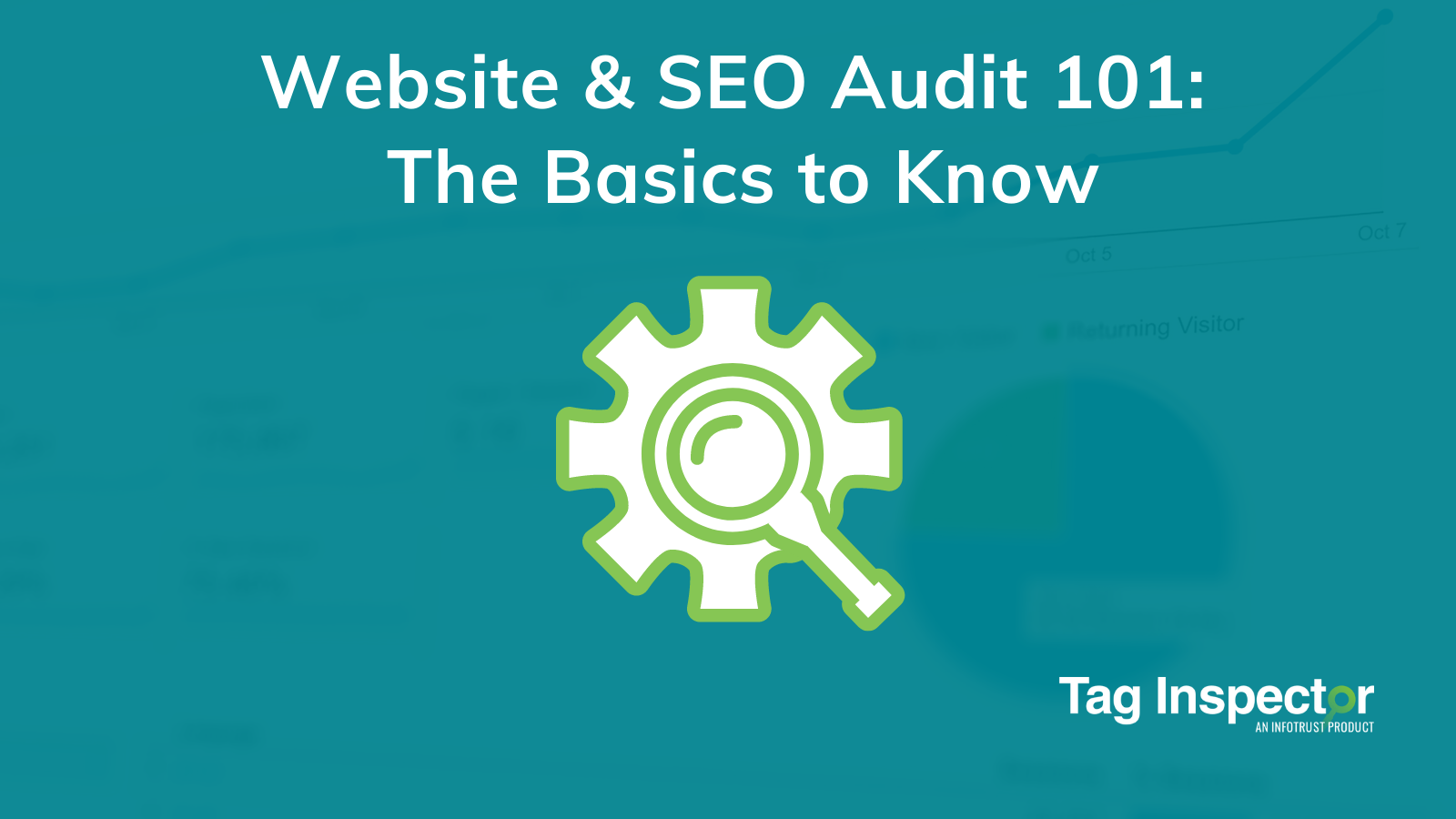What is a website audit?
A website audit (also referred to as a technical or search engine optimization (SEO) audit) is like servicing your car but for your website. Most commonly, a website audit is used for the purpose of improving a site’s search engine indexation or rankings. There are different types of site audit tools, but all send crawlers onto your site to scrape the metadata, look for any technical issues or areas for improvement, and then report them back to you. This can be information about 404ing pages, broken links, misfiring tags, and/or cookie compliance issues.
Why should I care about a website audit?
Site audits are as vital to a website as oil is to a car. However, depending on the size of your site, I wouldn’t recommend running an audit every three months. I usually recommend starting at running an audit at least once a year—and then increase the frequency as needed.
Different site audit tools have different outputs, but no matter what tool you’re using this data can be crucial. Armed with this audit data, you can improve the following:
- Page load speed
- User experience and accessibility
- Search engine rankings
- Indexation by search engines
- General Data Protection Regulation (GDPR)/California Consumer Privacy Act (CCPA) compliance
- Improve quality score for site (which impacts cost for PPC and CPC advertising)
- Internal data/tag compliance (if applicable)
The data in the audit will allow you to have a better understanding of what pieces of your site are not working properly, not needed, or are misfiring, therefore allowing you to prioritize what projects will be most effective for your company’s goals.
I will warn you that the first audit you run may come back with a bunch of errors. Don’t be too alarmed. These audits are meant to go into every nook and cranny and find every error or possible error that Google (or any other site engine) could find on your site. Some examples of items that are inspected:
- Duplicate/Missing/Short/Long
- Page titles
- Meta descriptions
- Alt-Text for images
- H1 tags
- H2 tags
- Google Analytics and/or Tag Manager not being on the page
- Thin/Duplicate content
- Backlinks
- Broken links/images
- Page load speed
- Mobile-friendliness
- Readability of URL
- Errors
- 40X
- 50X
- Redirects (30X)
Some of the items listed here may not be familiar to you, but in the hands of an SEO specialist, or in certain audit tools, they will tell you what to do if any of these items do come up with errors.
Benefits of a tag audit with a SEO/website audit
At first blush, you may not think that the tags firing on your page are related to your SEO ranking, but one of the biggest indicators of a site’s validity to Google’s crawler is page load speed. This is because historically sites that take longer to load mean that they have a ton of unneeded or clunky tracking or spammy images—and most users have a low attention span.
In order to reduce page load speed, you have to understand what is causing the bottleneck. This is where a tool like Tag Inspector can come to the rescue because it provides a point-in-time scan of what tags are firing on your site—which allows you to quickly identify any errant tags that are slowing down page load speed and/or aren’t required anymore by your marketing or analytics teams. Additionally, the Tag Inspector report quickly identifies any tags that are “piggybacking” off of your existing tags. These piggybacking tags don’t show up in your tag manager, but can significantly increase your page load speed and are still considered your responsibility to most privacy policies.
Types of website audit reports
There are basically two options for website audits, either self-service or using an agency/consultancy. There are pros and cons to each, but the good news is that there are some great and beginner friendly self-service options out there if you want to get started without having to spend a ton of money on an agency.
If you’re a smaller shop that is set up on a public CMS like WordPress, there are often plugins that can help provide guidance when creating new pages to make sure each of the components are set up correctly. By having a process or using a plugin like this, you can help keep your site SEO-friendly in between audits.
There are many tools in a variety of price ranges. Here is a list of some that I’ve used. This is a short list, but feel free to check out some of your own!
Conclusion
SEO may seem intimidating at first, but once you get into a rhythm it becomes a habit like checking your oil every 5,000 miles. If you keep an eye on your SEO, you should see that your indexation and rankings stay consistent or maybe improve after you make some of the technical updates identified by your agency or by your auditing tools. Make sure to take a good long look at those page load speed reports in Google Analytics and don’t forget a tag audit to better understand how your tags are loading on your page. Keeping your site “tuned up” will make your SEO journey an easy drive.
